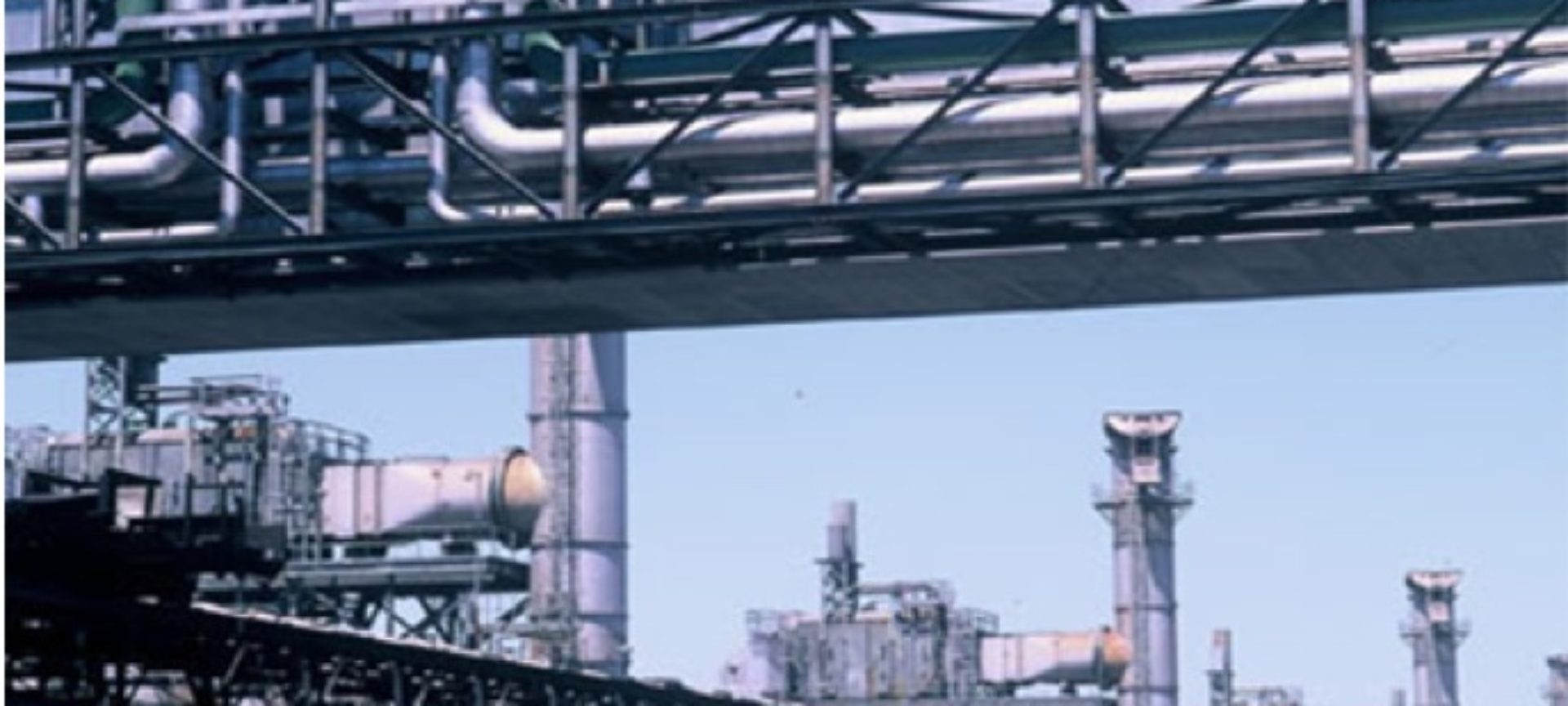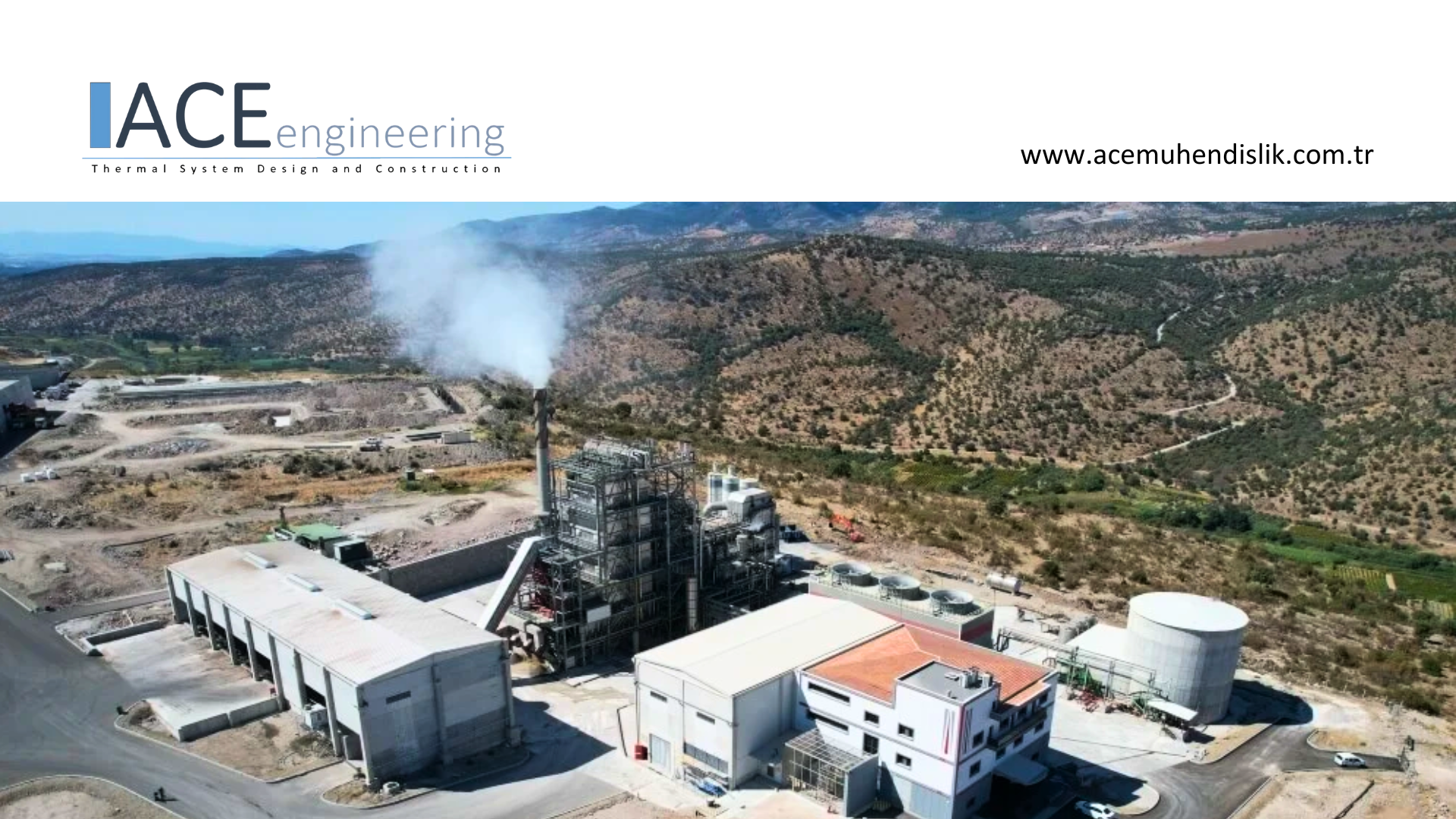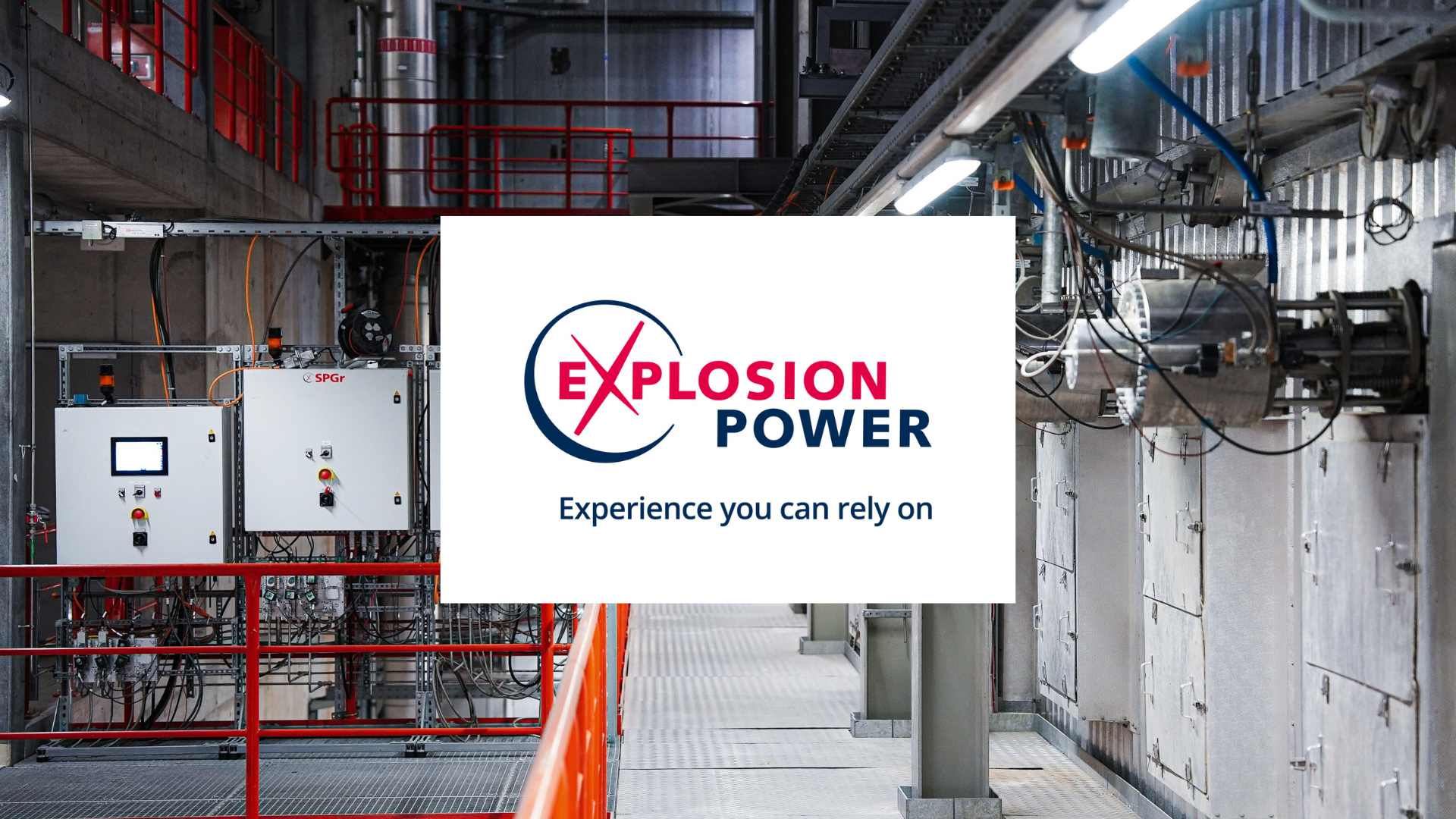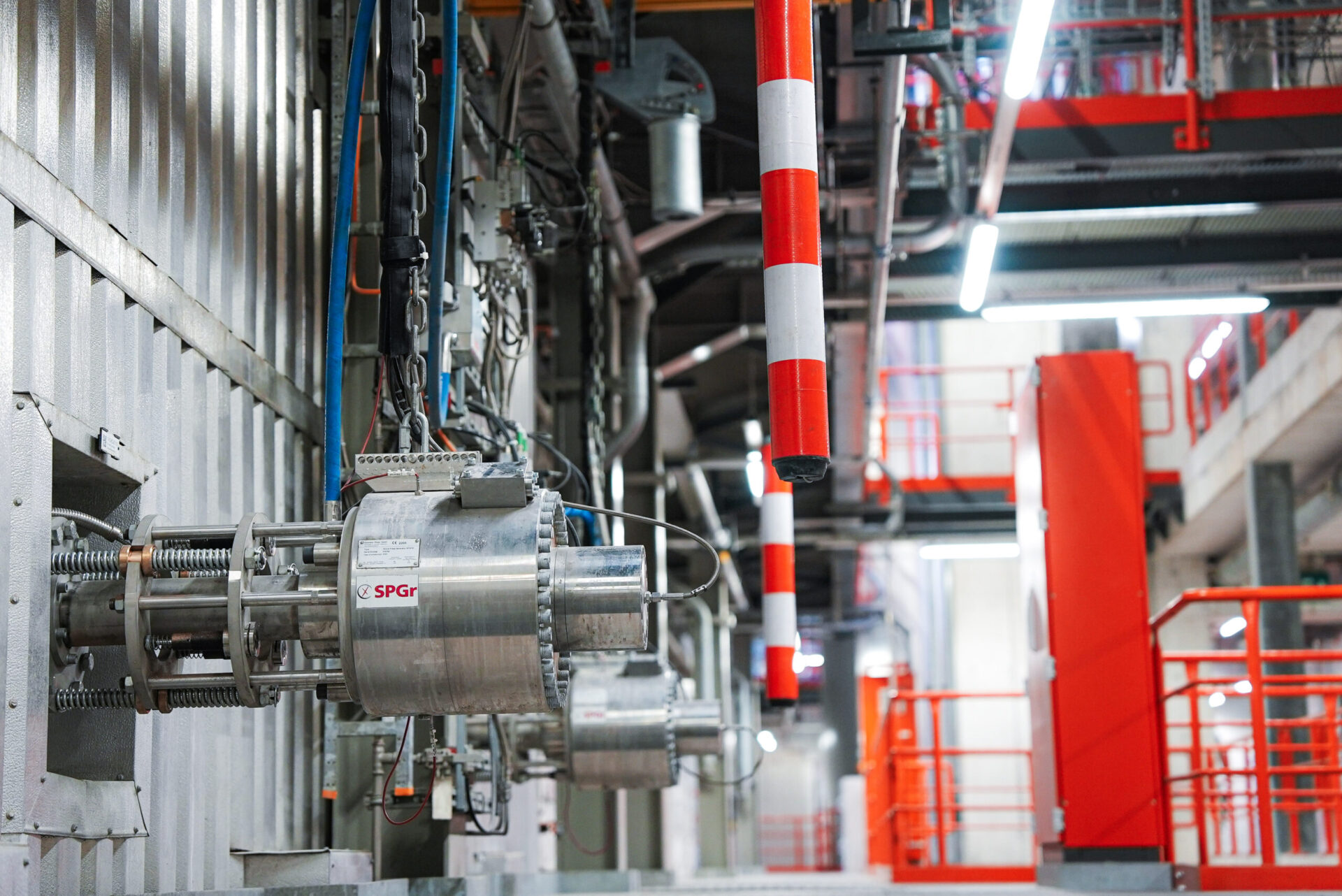Cokenergy LLC (USA) replaces all the originally installed sootblowers with SPGs for cleaning the Heat Recovery Steam Generators (HRSGs) for the entire sixteen HRSG fleet until the end of 2019. This was decided by the management after completing an evaluation of a 6-month trial run, where the bare as well as the finned tubes were cleaned to satisfaction.
Primary Energy Recycling Corporation, headquartered in Oak Brook, Illinois, owns and operates four recycled energy projects www.primaryenergy.com. ArcelorMittal teamed with Primary Energy in 1998 to address escalating energy costs and environmental concerns by taking advantage of waste heat generated by an adjacent onsite coke-making facility which is operated by SunCoke Energy.
Cokenergy, one of Primary Energy’s projects in East Chicago Indiana, operates 16 HRSGs which use waste heat from the exhaust gas of the adjacent coke batteries. The energy facility is an integrated first-of-its-kind CHP (combined Heat & Power) project using waste heat recovered from the non-recovery-style coke oven batteries. The capacity is sufficient to supply up to one-fourth of ArcelorMittal Indiana Harbor’s total electrical requirements or more than half of its process steam needs, replacing onsite coal-fired generation that was shut down after the facility came on-line. In 2007 the plant produced 515’000 fewer tons of carbon dioxide when compared to other plants using separate heat and power sources.
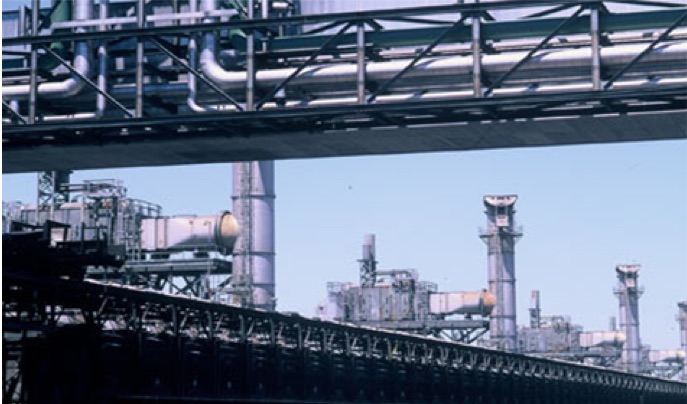
The Project Background
The HRSGs at Cokenergy consist of an arrangement of heat exchanger tube sections as seen in Fig. 2. This includes finned tubes in the rear evaporator and economizer sections. Due to fouling conditions from the coke oven gas, 12 sootblowers were retrofitted into each HRSG not long after commissioning in an attempt to provide on-line cleaning.
Cokenergy’s experience for more than 15 years indicated that the sootblowers were not able to satisfactorily clean the heat exchanger. There were several areas of optimization potential, which are as follows:
- effectiveness of cleaning the HRSG surfaces (especially the finned tubes)
- to eliminate the use of high-pressure steam for cleaning in favor of power generation
- to avoid the introduction of moisture which can add to localized corrosion of tubes
- to update of the current cleaning system from 1998
- to reduce the high maintenance costs required by the sootblower system
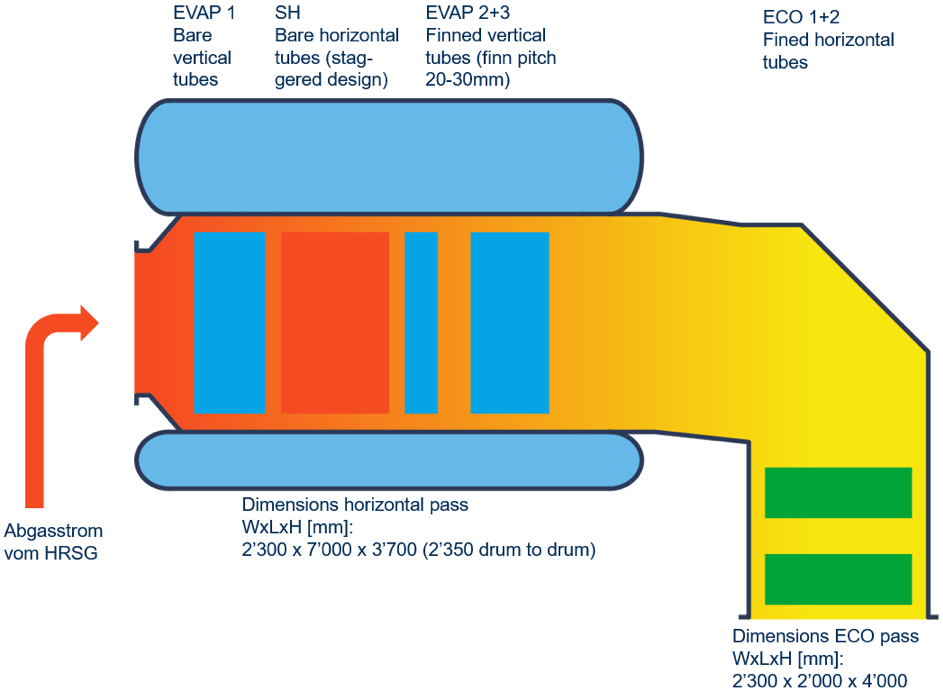
Operator’s Investigation
Due to the deficiencies of the originally installed system, Cokenergy was evaluating available boiler cleaning systems which would be suitable for finned tubes cleaning while satisfying some or all of the above listed benefits. After researching available options, Cokenergy elected to trial to Shock-Pulse-Generators (SPG) offered by Explosion Power GmbH. The main advantages are as follows:
- The pulse cleaning ability extends into areas not reachable to sootblowers.
- No steam is required, allowing all steam to be directed to the steam turbine.
- The SPGs eliminate introduction of moisture to the acidic gas path environment in the HRSG.
- The SPG is a compact online unit being permanently fastened outside of the hot gas environment and being remotely actuated from a control unit or DCS.
- The SPG design with minimal moving parts leads to reduced maintenance and repair.
- The SPGs have a long positive track of applications in severe industrial conditions.
Cokenergy’s application for cleaning heat exchanger tube bundles in the HRSGs handling 950°C hot exhaust gas from the coke oven batteries has not been experienced so far. Therefore, Cokenergy decided to run a trial test to thoroughly evaluate the suitability before any decision was made for application on all 16 units.
A 6-months trial operation on a single HRSG was selected to prove the cleaning ability. The unit D3 was selected to evaluate the trial run. Two EG10L-type SPGs were installed in the HRSG as follows:
- One SPG into the membrane wall upstream of the bare-tubes superheater (behind the evaporator),
- One SPG into the transition duct upstream of the finned-tubes economizer.
The trial operation started in November 2016.
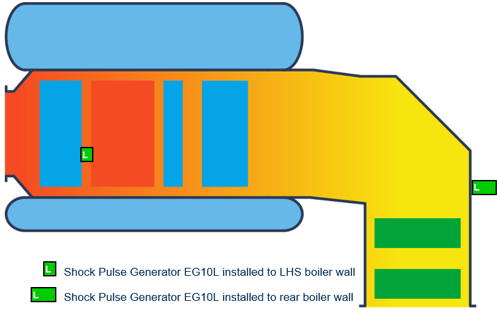 | 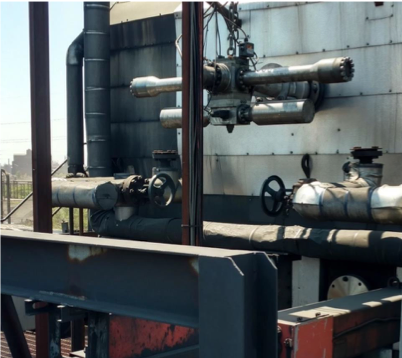 |
| Fig. 3: Location of the SPGs in HRSG of the unit D3 | Fig. 4: Location of the SPGs in HRSG of the unit D3; Picture by Primary Energy |
Evaluation of the Trial Run
The trial operation was carried out between November 2016 and April 2017, i.e. for 136 days and compared to the previous operation time of similar duration with the originally installed sootblowers.
The results are shown in the following pictures:
See the position of the camera upstream of the evaporator, where even the vertical tubes are cleaned with increased efficiency compared to the sootblowers, due to the spherical spread of the shock wave, whereas the SPG is located downstream of such to primarily clean the tubes of the superheater.
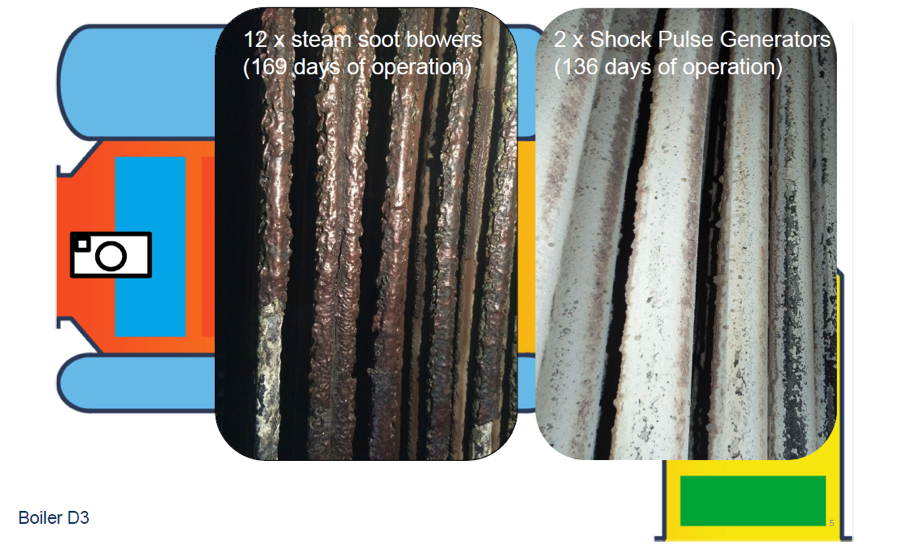
The location of the SPG upstream of the superheater was selected for keeping a free passage and optimizing the heat transfer.
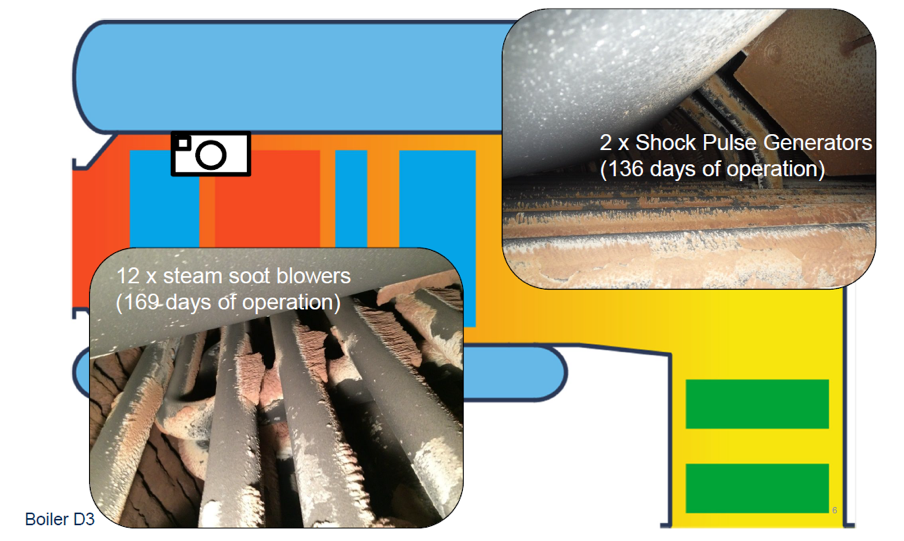
The SPGs were found to be very effective at maintain the gas path clear between the superheater section and the first finned evaporator section. Sootblowers could not be installed in this section and were not capable of reaching this area to address the fouling. An additional key problem was the fast fouling of the finned tubes, where the installed sootblowers were not able to penetrate far into the passage for the flue gas. This cleaning was rectified to satisfaction by location of the SPG upstream of the economizer.
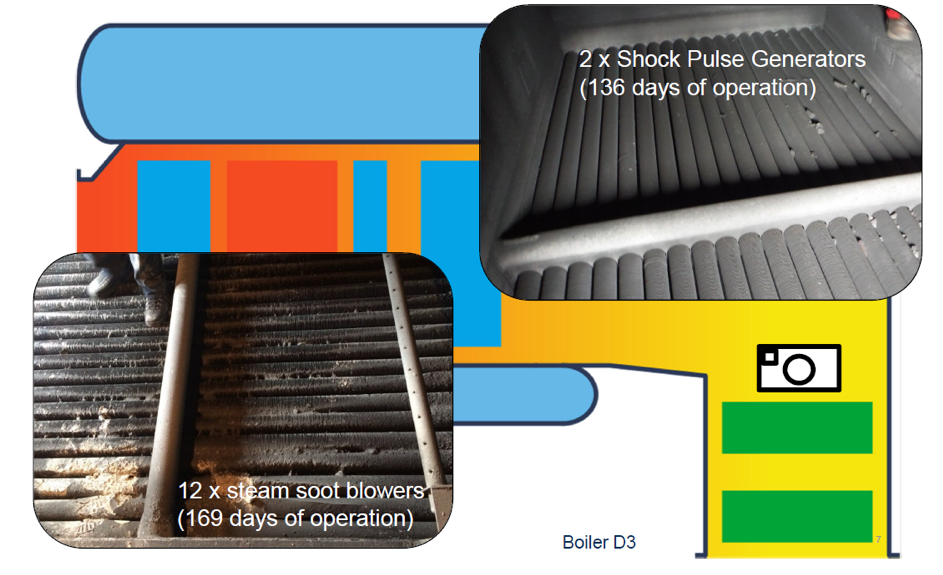
The efficiency of the SPG is best demonstrated in the graph of the pressure drop across the HRSG:
Originally a considerable increase was evident after approximately 150 days of operation with the sootblowers cleaning. During the same period of time, the pressure conditions remained unchanged with the SPG cleaning.
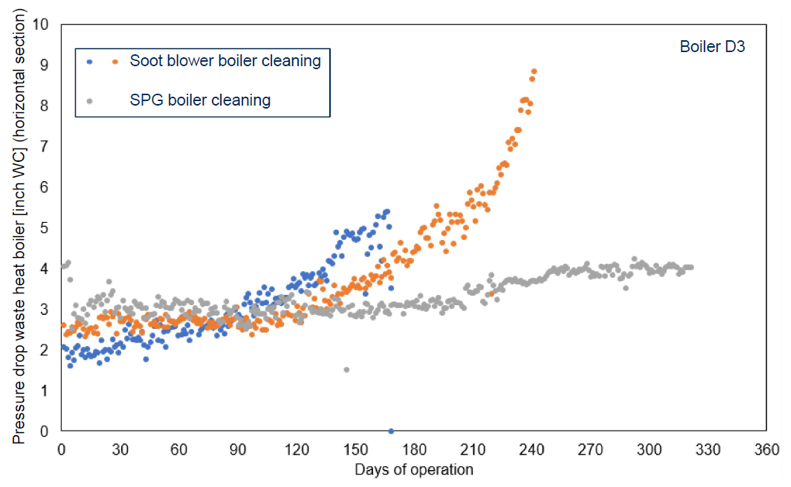
Fig. 8: Pressure drop of the horizontal section of the HRSG (original vs. trial period); Graphics by Explosion Power GmbH
The Decision
Having had successfully completed the 6-months trial run on a single HRSG, the project has been approved by the management. By the end of 2018, 12 of 16 HRSGs have been permanently equipped with 2 SPGs on each HRSG, with the remaining 4 HRSGs receiving their SPGs in 2019. Finally, a total of 192 sootblowers will be replaced by 32 SPG’s for the entire facility. The cost/benefit evaluation proved very favorable even with conservative assumptions.
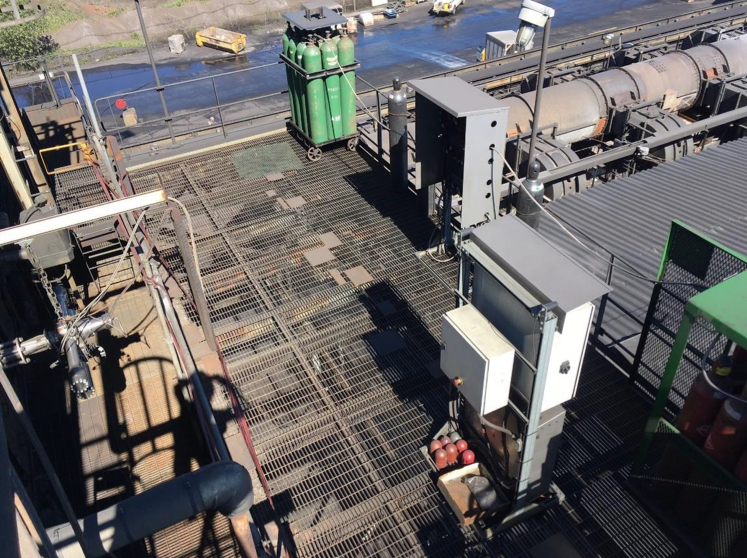
Main Data of Cokenergy LLC:
Commercial operation: October 1998
Customer: ArcelorMittal
Location: East Chicago, Indiana
Number of coke-batteries: 4 (A,B,C,D), containing four HRSGs per battery (Heat Recovery Steam Generator); total of 268 coke ovens – 67 ovens per each battery.
Flue gas to HRSG: approx. 950°C
Steam generation in each HRSG: 30 t/h at 385°C

